Drew Brees, New Orleans, and Saints Fans were All Great Together
New Orleans needed Drew Brees as much as Drew Brees needed New Orleans. Together, a shattered city and an NFL quarterback with a broken shoulder achieved greatness and brought hope to a team, a city, and a region.
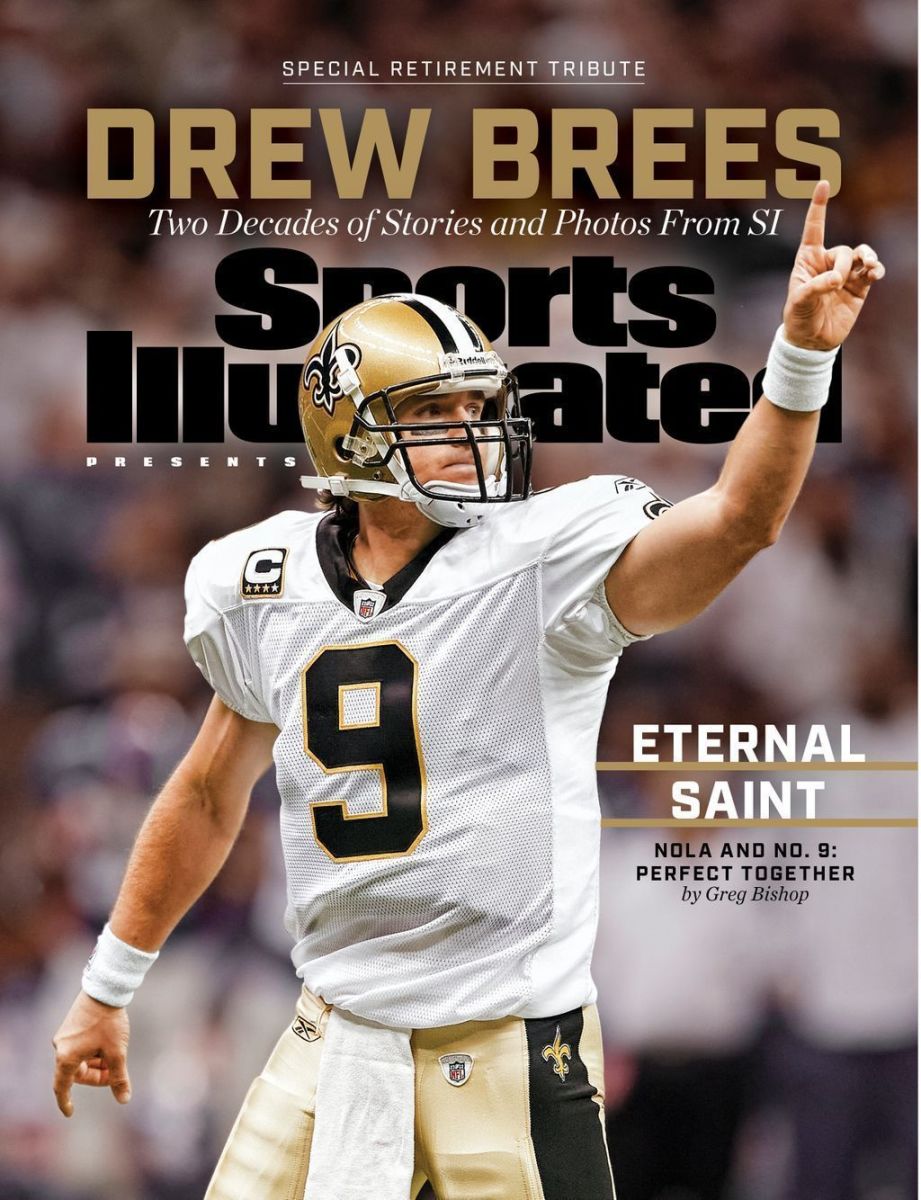
Poetically, March 14 served as the beginning and the end for Drew Brees as a member of the New Orleans Saints. In 2006, Brees had Dr. James Andrews to repair his throwing shoulder to maintain his NFL career. In March, the New Orleans Saints signed and introduced Drew Brees as their new franchise quarterback. Fifteen years later, the future first-ballot Hall-of-Famer announced his retirement from the game he passionately loved, football.
NFL and football followers will empathize with the Saints faithful upon the news of Drew Brees' retirement. Saying goodbye will not be easy, especially to their beloved franchise quarterback. Still, many onlookers may not fully grasp the difficulty Saints fans share as they endure the symbolic end of a triumphant era in New Orleans sports history.
A NEW HOPE
New Orleanians were battered, shattered, and broken after Hurricane Katrina's destructive force hit the city in August of 2006. The massive storm devastated the Crescent City. Over 25,000 people were displaced and called the Louisiana Superdome home for the next few weeks, and more than 1,600 citizens lost their lives from the deadly floodwaters following Katrina's path.
The storm crippled lives and crumpled structures, but the people had the Saints. They still believed in the team and turned to the team for comfort and hope through it all.
Whether it was a road trip to Baton Rouge, San Antonio, or other cities for the 2005 regular-season games, the Who Dat Nation remained faithful with high expectations.
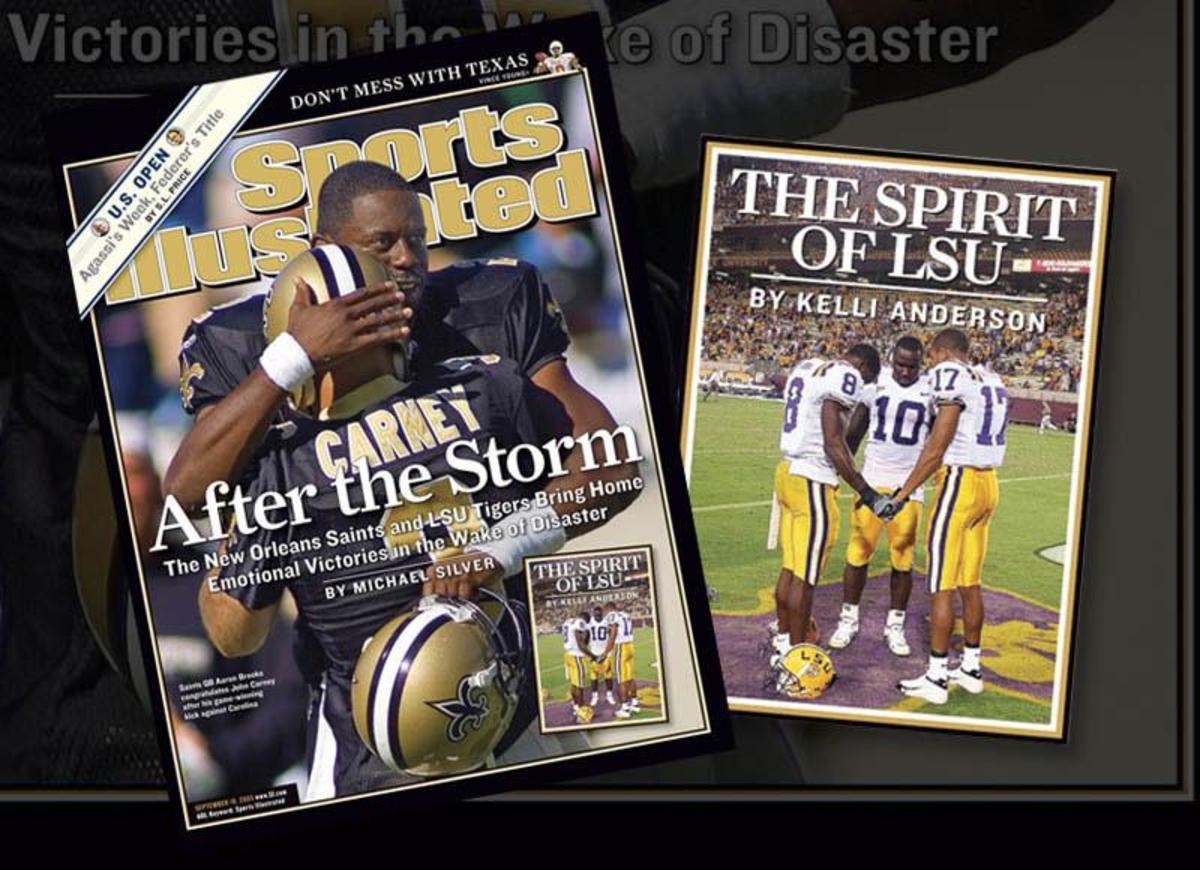
Just like the city itself, the New Orleans Saints organization saw the effects of Katrina throughout the 2005 NFL season. The team had no home or identity. The team played the entire season on the road, including a "home game" called Giants Stadium. The 2005 Saints had a daunting task, one that no team in NFL history had to endure and overcome. The Saints played to a measly 3-13 record, and at season's end, the search for a new head coach and quarterback led a broken franchise.
To call New Orleans a hot spot free-agent destination in 2006 was a lie. The difficulties of selling not only a franchise in the middle of a rebuild but a city amidst an even bigger one were astronomical. Who would want to jump-start a career or start a family in a city surrounded by so much uncertainty? Perhaps a player who was also shattered and looking for a similar hope as the city of New Orleans.
Brees was once a Heisman Trophy finalist at Purdue. After five years with the San Diego Chargers, he entered free agency following a catastrophic injury on the final play and week of the 2005 regular season. Drew was standing in the shadows of his goal line. The football was snapped and later stripped from Brees. He dove to recover the loose ball, and then it happened. During the scramble, he dislocated his shoulder on his throwing arm. Dr. James Andrews of Alabama performed Labral repair surgery that required 11 anchors; a routine repair surgery typically requires 2.
The writing was on the wall for Brees. Phillip Rivers was his successor and already in the building waiting. After suffering a career-altering injury, it was an easy transition for the Chargers to make Rivers their starter for 2006.
"That would be the worst f---ing mistake this organization could ever make."
THE NEW ORLEANS COUP D'ETAT
Brees entered a career crossroads. He was a free agent, and his days in the NFL were unclear, especially for a quarterback whose shattered shoulder was on the mend. Nevertheless, Brees had two suitors when free agency opened in March of 2006, the Miami Dolphins and the New Orleans Saints.
Miami was clearly the more attractive destination for the young quarterback. The Dolphins concluded the 2005 season as the hottest team in football, winning their last six regular games behind head coach Nick Saban and a young stud running back Ronnie Brown.
Saban and Miami were prepared to offer Brees a 5-year, $50M contract and even had a jersey made by equipment staff for the potential signing. However, the Dolphins medical staff would not clear Brees' surgically repaired shoulder and decided to sign veteran quarterback Dante Culpepper.
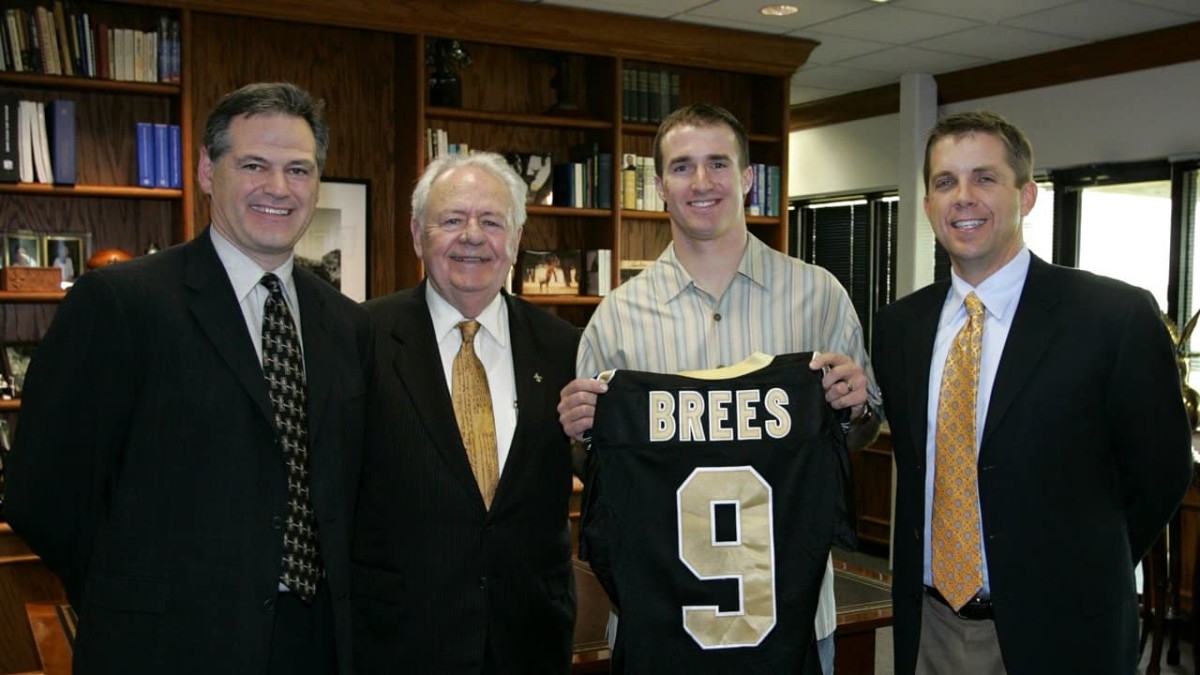
Brees was picked-up in Tom Benson's jet from Miami, and signed a six-year, $60 million deal with $20 million guaranteed with the New Orleans Saints in the coming days. On March 14, 2006, Brees was introduced as the franchise's next starting quarterback and praised the hospitality shown by the city throughout his free-agent process.
I just felt that energy in New Orleans... From the very beginning there was a genuine feeling that they wanted me there. They believe I can come back from this shoulder injury and lead them to a championship. They were as confident as I am, and that meant a lot."
- Drew Brees on signing with the Saints (March 2006)
Alongside first-time head coach Sean Payton and second overall draft choice RB Reggie Bush, Drew Brees provided the Saints a breath of fresh air and a new sense of excitement heading into the 2006 regular season. But after two consecutive victories to open up the season, nothing could have prepared the Saints of the city of New Orleans for what was to take place on September 25, 2006.
GAME OF THE WEEK: It was a ‘Domecoming’ to remember as the Saints beat Atlanta 23-3 in the Superdome's reopening 13 months after Hurricane Katrina.
— AP NFL (@AP_NFL) November 7, 2019
Listen below as Steve Gleason speaks at his locker after the win. Full coverage: https://t.co/YDNhdNaeb9#NFL100 pic.twitter.com/xJ3qp1gAsC
A MAGICAL FIRST SEASON
The first game the Saints played in the Louisiana Superdome in 13 months was a day that many New Orleanians never thought they would see. The howling winds and pure devastation of Hurricane Katrina left the Dome in ruins, but a little over a year later, the Saints and the entire New Orleans fanbase felt a shift with one play.
"It sounded like a shotgun blast," Drew Brees said. Others will tell you it was the loudest the Dome has ever been or ever will be. When New Orleans Saints' special teams ace Steve Gleason blocked the opening punt of the game, a weight was lifted off of the shoulders of New Orleans. It was indescribable... It was as if for one moment the world stopped and for the first time, in what felt like forever, the city of New Orleans had a reason to celebrate.
"If the Saints could come back... Why couldn't the city?" This was the question and mindset of thousands in the Bayou.
A city normally filled with joy, love, smiles, and good times could finally see the light at the end of a pitch-black tunnel. That moment, the first touchdown back in the Superdome, represented so much more than football. So much so that it is immortalized on a stone statue outside of the stadium that reads "Rebirth".
If the Saints could come back... why couldn't the city? This was the question and mindset amongst thousands in the Bayou from that day forward. Little did they know the city and their beloved Saints were coming back even stronger.
The Saints finished their first season back in New Orleans after Hurricane Katrina with a 10-6 regular-season record. They then battled the Philadelphia Eagles in the NFL Divisional Round of the 2006 Playoffs. New Orleans soon found themselves in unfamiliar territory, victorious and one win from a visit to the Super Bowl.
The New Orleans Saints' magical season ended in the NFC Championship game at Soldier Field with a 39-14 loss to the Chicago Bears. Brees won Saints fans' hearts in one season as he took the team further in the postseason than past quarterback. He left his mark on the community and offered help in rebuilding the city. For his humanitarian efforts, Brees was awarded the 2006 Walter Payton Man of the Year Award and set the tone for what he and his family were to do for New Orleans for many years to come.
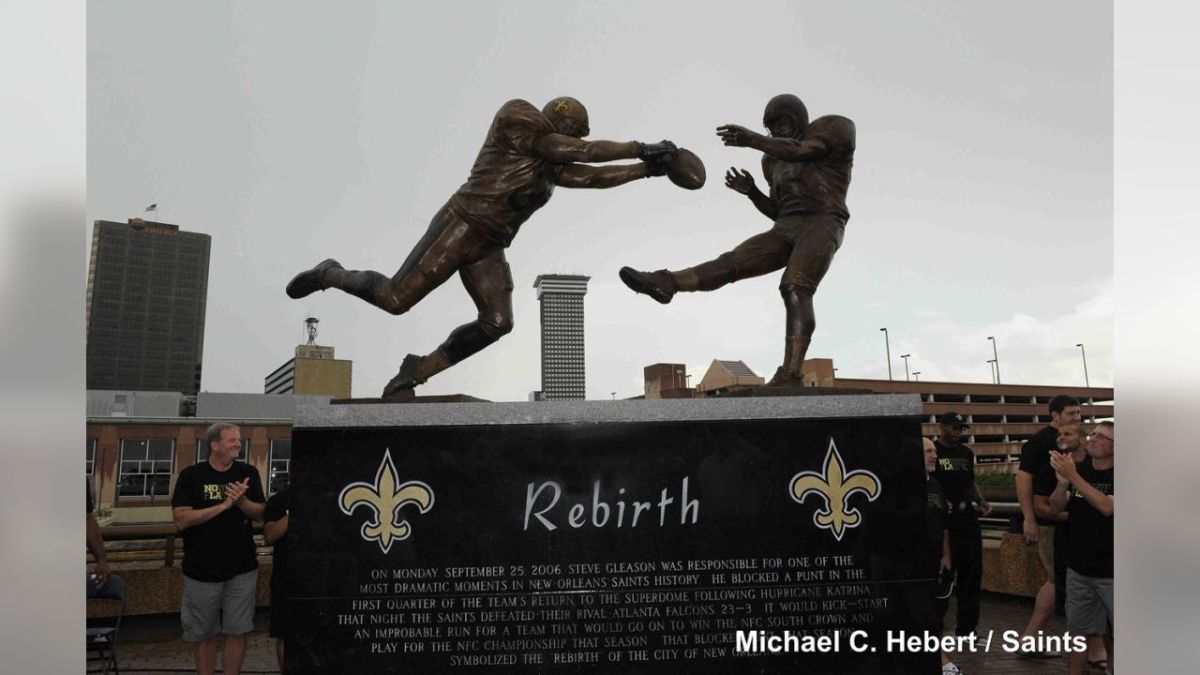
LEARNING AND WINNING
After disappointing seasons in 2007 and 2008, the 2009 season began with high expectations for the Saints and the league's reigning Offensive Player of the Year, Drew Brees. New Orleans hit the ground running in '09, rattling off 40+ points in four of their first six contests. The high-powered offense and opportunistic defense would lead the Saints to 13 consecutive victories before hitting a roadblock at the end of the regular season.
After starting the year 13-0, New Orleans would drop their final three regular-season games to the Cowboys, Buccaneers, and Panthers. Despite the poor finish, the Saints claimed the NFC's #1 seed and earned a first-round bye in the playoffs.
Headed into the Divisional Round, the Saints looked to "Bring the Wood" and make history. No team in NFL history had ever lost the final three games of the regular season and went on to win the Super Bowl.
The Saints marched by the Arizona Cardinals and won a thrilling NFC title game against the Minnesota Vikings to earn a Super Bowl XLIV trip in Miami.
The opponent? The league's MVP Peyton Manning and the Indianapolis Colts.
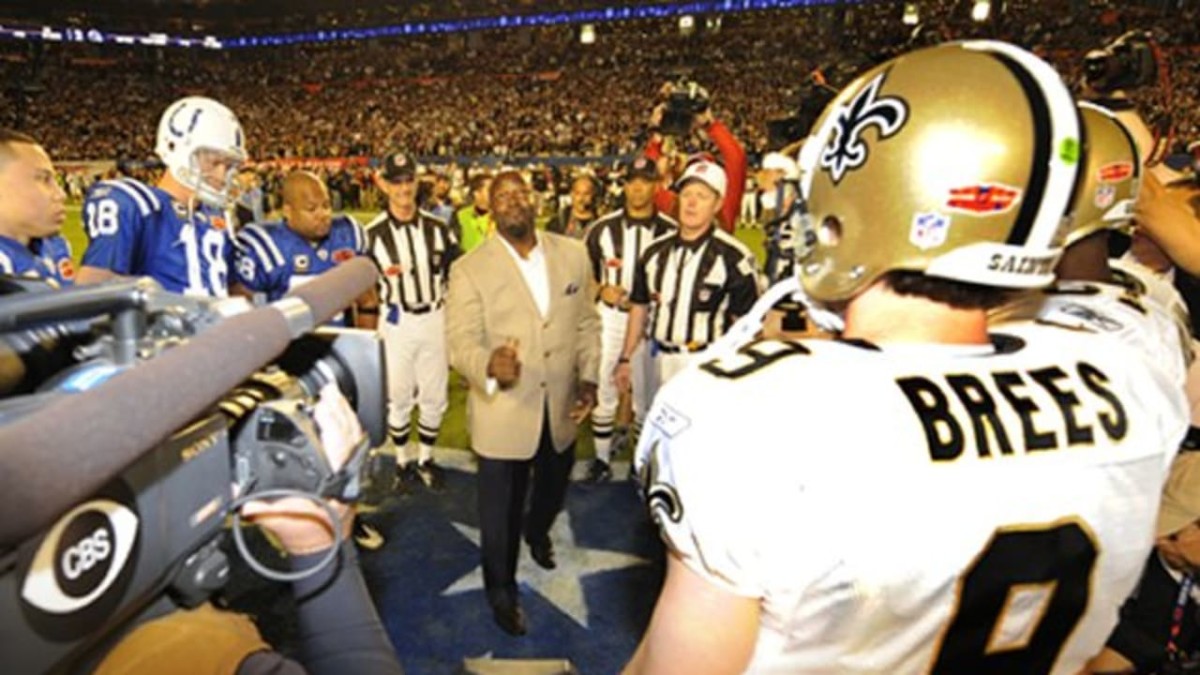
New Orleans trailed 10-6 at halftime in Super Bowl XLIV and were set to kick off the second half. In hopes of turning the tide of the game and steal a possession, Saints Head Coach Sean Payton made the guttiest call in Super Bowl history, beginning the second half with a surprise onside kick, later known as "AMBUSH."
"AMBUSH" was successful and gave the Saints the momentum to begin the second half. Two second-half touchdown passes from Brees gave the Saints the lead late in the fourth quarter. Minutes later, a pick-six by DB Tracy Porter sealed the deal, and New Orleans went on to win their franchise's first Super Bowl championship. Drew Brees was named the game's MVP, completing 32-of-39 passes for 288 yards and two touchdowns.
Brees cemented himself as a legend in Louisiana by leading the Saints franchise to their first Super Bowl title. But he and his family were not done building a legacy in New Orleans and across the Gulf Coast Region.
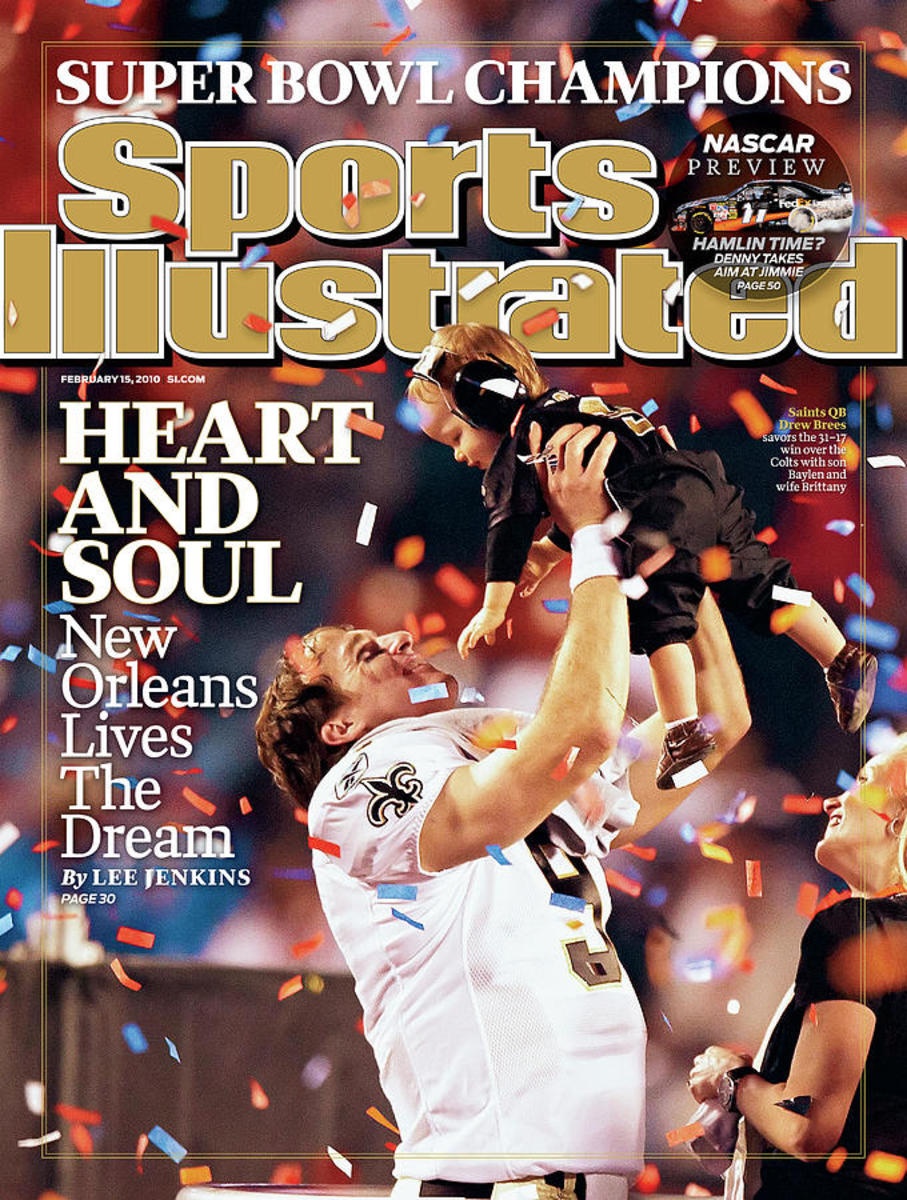
THE NEXT DECADE
Over the decade following his Super Bowl XLIV victory, No. 9 would continue to serve as the face of not just the franchise but the entire state of Louisiana. Brees kept the Saints relevant, even through several mediocre years in the mid-2010s. No matter the game, there was a belief and a hope that the Saints could come out victorious.
"With Drew Brees, we always have a chance" was the phrase whispered and sometimes even shouted, throughout the Superdome, living rooms, and bars across the Southeast over the last 15 years. Others call him "Breesus: Savior of the Saints" which provided an escape from a harsh reality and aftermath of what Katrina brought. So when he led the Saints to victory, he simultaneously led the whole city to victory.
The city needed the Saints, a light, a hero, and Drew served as New Orleans' hero. For every touchdown, every victory, and every record Brees broke, laying another brick in his path to Canton, Ohio... the city of New Orleans could lay a brick towards rebuilding both physically, mentally, and emotionally.
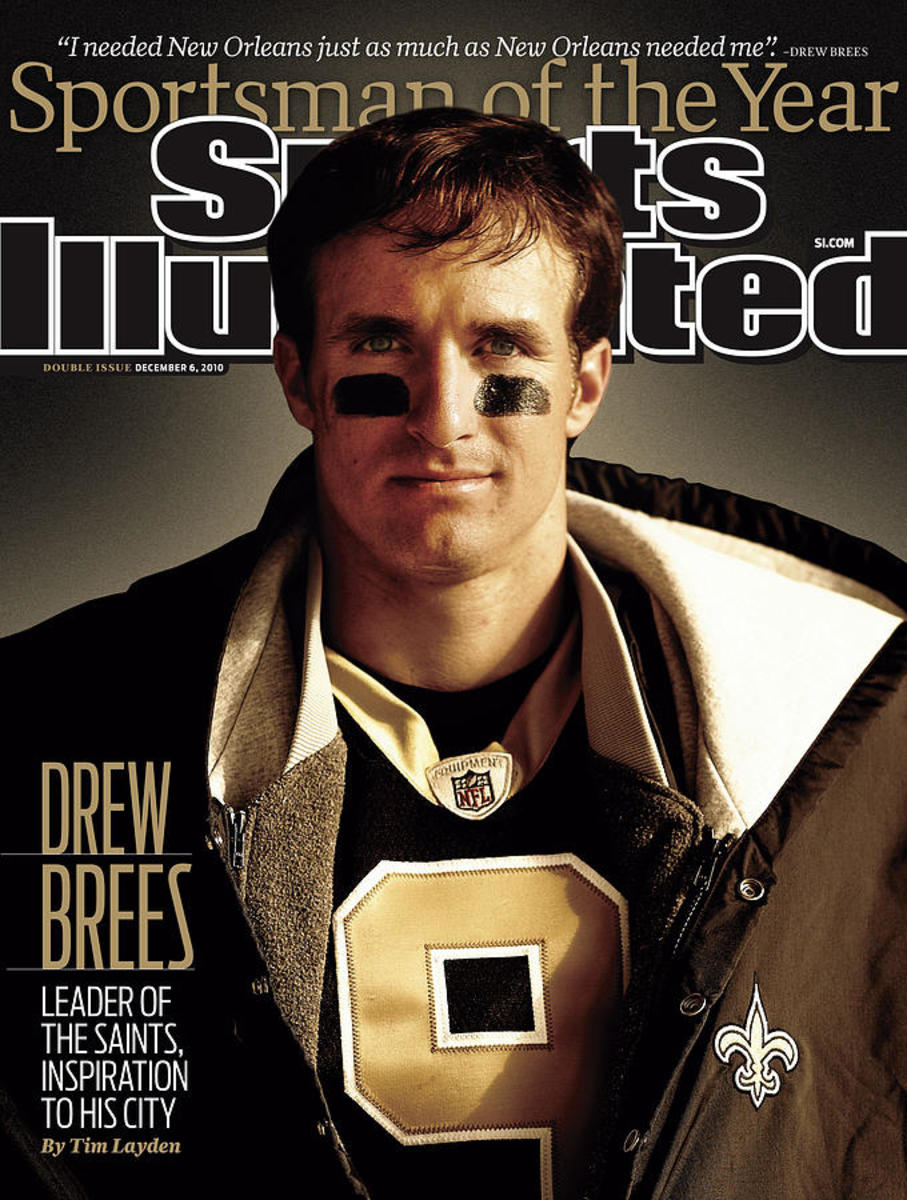
LEADER AND INSPIRATION
While the numerous NFL records, accolades, and victories will always hold a special place in the hearts of the Who Dat Nation, it was Brees' work off the gridiron that resonates most throughout the city of New Orleans.
From the time of their arrival to New Orleans in March of 2006, both Drew and Brittany Brees helped rebuild the city with their bare hands after feeling "that maybe we were being called to New Orleans for a reason." throughout Drew's free agency.
In his first three years with the Saints, Drew Brees' Foundation, The Brees Dream Foundation, had worked with 50 New Orleans schools and organizations and committed north of $6 million in Louisiana, San Diego, California, and West Lafayette, Indiana.
The Brees Dream Foundation was founded in 2003 to improve the quality of life for cancer patients and provide care, education, and opportunities for children and families in need. Over the past 18-years, the foundation has contributed over $45,000,000 to charitable causes, including many in New Orleans.
As recently as 2020, the Brees family donated $10,000,000 to underserved communities in Louisiana to help provide relief amidst the COVID-19 pandemic. The donation was distributed to various organizations throughout the state and included Ochsner Community Health Centers, Second Harvest Food Bank, Louisiana Children's Museum, and Make Music NOLA.
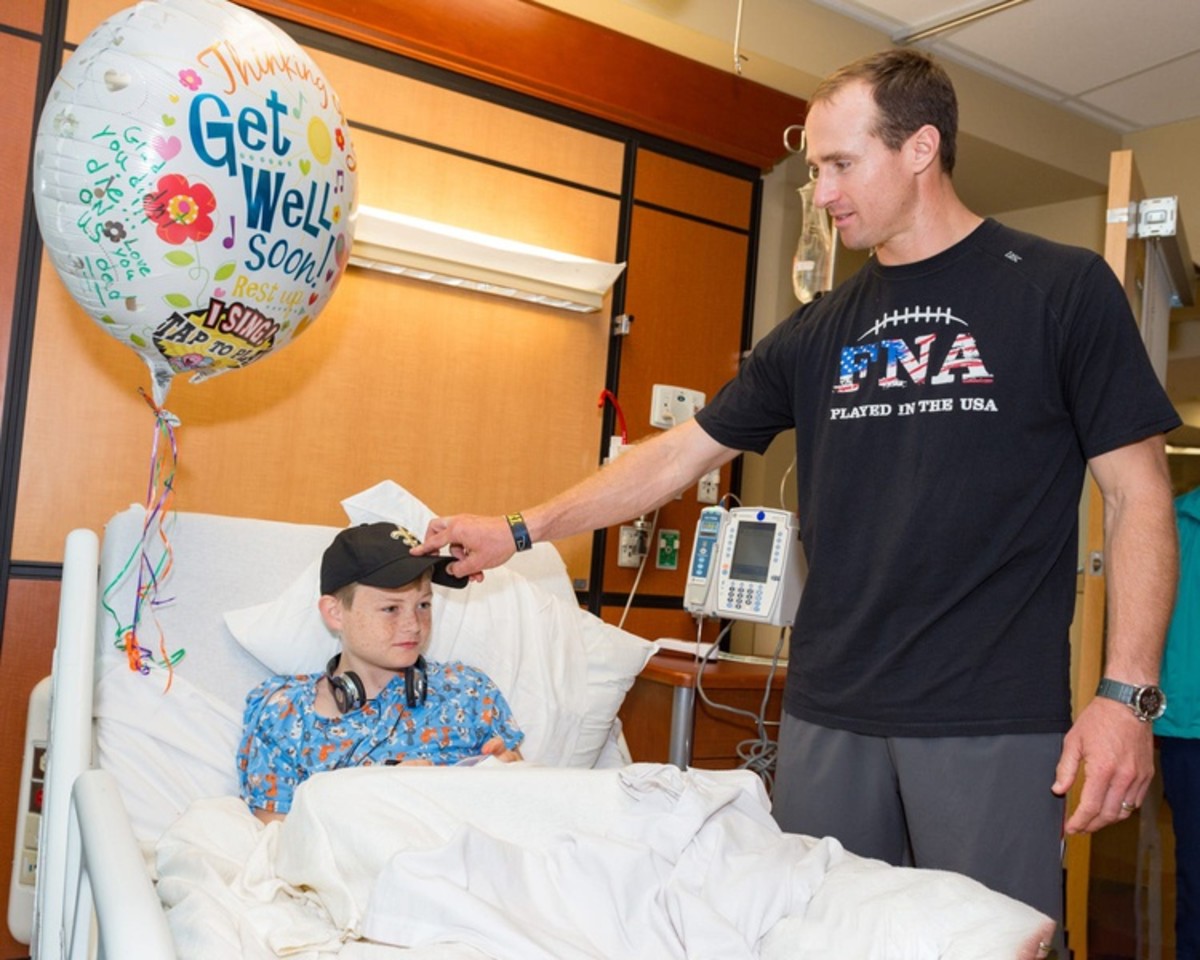
It is rare to find a perfect match in life, but in the case of Brees and the Saints, it felt like a match made in heaven. New Orleans needed hope, a chance, and someone to believe in them after a catastrophic storm. In many ways, Drew Brees needed the same. New Orleans embraced Drew, and he loved them back. Together they not only rebuilt a city but brought hope, passion, and love back into a city that all but lost all of that and more 15 years ago.
"I needed New Orleans just as much as New Orleans needed me. People in New Orleans needed somebody to care about them. And it was the one place that cared about me."
Quarterback Drew Brees played 20 NFL Seasons between the San Diego Chargers (2001-05) and the New Orleans Saints (2006-2020). He was selected to 13 Pro-Bowls, 5 All-Pro Teams and named the league's Offensive Player of the Year in 2008 and 2011. Brees retires as the NFL's all-time leading passer, Super Bowl XLIV Champion/MVP, and the greatest player in New Orleans Saints franchise history.
For all the latest New Orleans Saints News & Rumors follow:
The Saints News Network at www.saints.media.
Follow Saints News Network’s Writer, Brendan Boylan, on Twitter & Instagram at @btboylan.
Continue to follow all Saints’ coverage on Social Media with Saints News Network at @SaintsNews on Twitter, Instagram, and Facebook.
